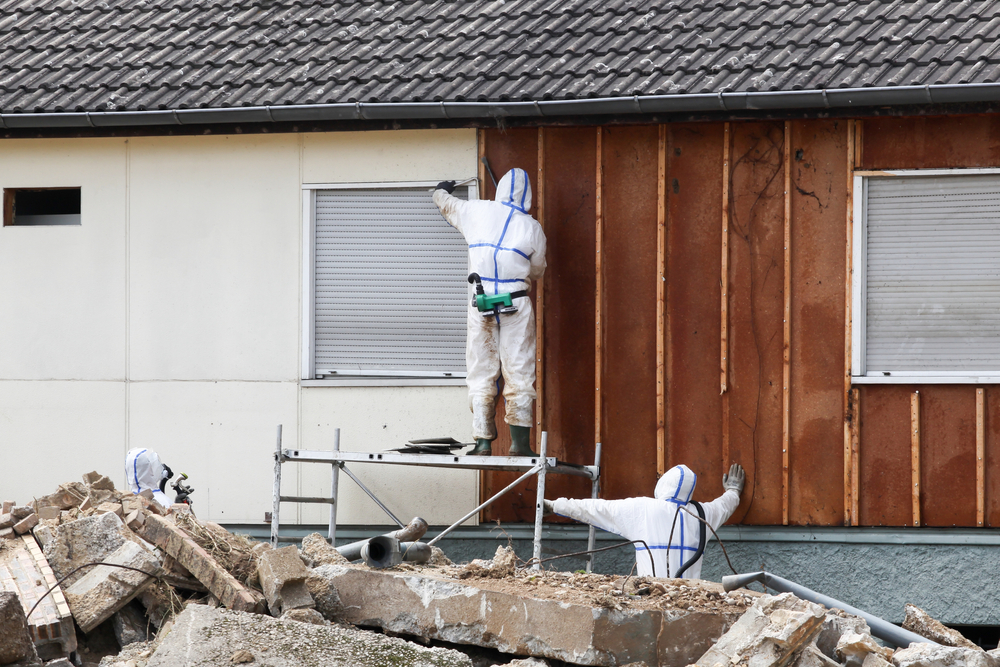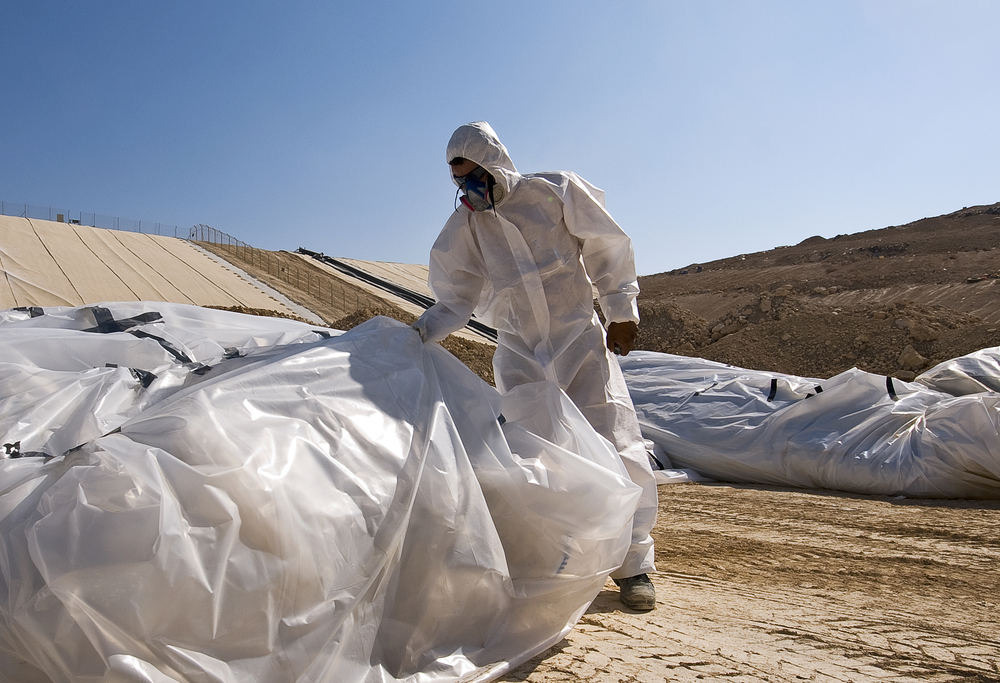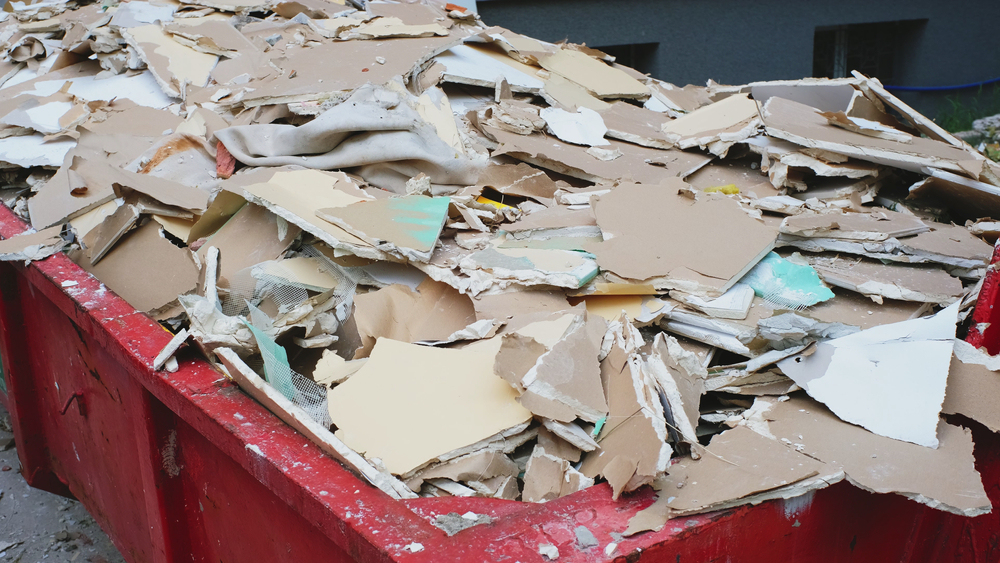
Asbestos in homes is a critical concern, especially in Melbourne, where many houses built before 1985 contain this hazardous material. Understanding how to recognize asbestos, the importance of professional inspection, and the necessary steps to take if you discover it in your home is crucial for ensuring your family’s and the environment’s safety.
In this blog post, we’ll guide you through finding & removing asbestos in Melbourne homes and provide valuable insights on handling asbestos safely and responsibly.

Asbestos, one of the naturally occurring silicate minerals, was widely used in Australian homes built before 1985 due to its fireproof, waterproof, and superior insulating properties. However, when asbestos-containing materials are damaged, disturbed, or in disrepair, they can release airborne asbestos fibres, leading to serious health risks. Hence, homeowners must be adept at detecting asbestos in their homes and familiarizing themselves with its common hiding spots.
Asbestos can be found in diverse parts of a home, including:
Therefore, it is crucial to stay alert during home renovations or demolitions. Before you start any work on your property, assume that asbestos is present and take the necessary precautions to identify and manage it accordingly.

While it is sometimes possible to visually identify asbestos, determining if a material contains asbestos simply by visual inspection is not always feasible. Asbestos insulation, for example, is generally greyish-brown or silver-gold and can release asbestos dust into the air when disturbed. Asbestos plaster, on the other hand, can have a “popcorn” texture or be a lumpy white/grey concrete-like substance when sprayed onto surfaces and may contain up to 5% chrysotile asbestos.
The most reliable method for identifying asbestos in an old house, especially during home renovations, is to send samples to a lab for testing. This ensures accurate identification and helps you take the necessary precautions to protect your family and the environment from potential asbestos exposure.
In addition to external cladding, wall linings, eaves, roofs, and fences, asbestos fibres can commonly be found in:
Loose-fill asbestos was also commonly used as insulation in the walls and roofs of homes in the 1960s and 1970s.
Knowing these common locations in domestic premises enables homeowners to act appropriately and prevent asbestos exposure, a precursor to asbestos-related diseases. When planning any renovation or demolition work, it’s imperative to be conscious of these areas and engage a professional asbestos inspector to ensure the safety of everyone involved.

Professional asbestos inspection is vital for several reasons:
Hiring a professional asbestos inspector ensures that your home is thoroughly inspected and any asbestos-containing materials are properly identified and handled.
By conducting a comprehensive inspection, professional asbestos inspectors can ensure adherence to the requirements outlined in the Occupational Health and Safety Act 2004 and the Occupational Health and Safety Regulations 2017. This entails keeping an asbestos register onsite and following the proper protocols for removing and disposing of asbestos materials. Abiding by these regulations guarantees the safety of workers and the public when interacting with asbestos.
Expert inspectors are instrumental in accurately identifying and assessing asbestos-containing materials in your home. They have the necessary skills, knowledge, and experience to handle asbestos safely. The specific requirements may differ, yet typically, they have a minimum of two years of experience in asbestos removal work and have completed the appropriate level of training for the work being supervised.
In addition to their expertise, inspectors utilize a range of equipment, such as:
This equipment, coupled with their knowledge and experience, ensures that asbestos materials are thoroughly assessed and managed to minimize the risk of exposure.
Asbestos inspectors are pivotal in ensuring adherence to work health and safety laws and maintaining proper documentation. The Occupational Health and Safety (OHS) procedures and regulations clearly outline the legal requirements for asbestos inspection in Melbourne. It is essential to adhere to these laws and regulations to fulfil your legal obligations regarding asbestos management and removal.
Some documentation necessary for asbestos inspections may include an asbestos register, a management plan, and an asbestos clearance certificate. By engaging a professional asbestos inspector, you can ensure that all legal requirements and compliance measures are met, protecting the health and safety of everyone involved.

If you stumble upon asbestos in your home, you must handle it as if it contains asbestos until proven otherwise. Refrain from touching or disturbing the material and contact a licensed asbestos removalist for proper removal. The obligations of a homeowner after identifying asbestos include:
Adopting these measures safeguards your family and the environment while reducing the risk of asbestos exposure. It is crucial to be proactive in managing the presence of asbestos in your home and seek professional help when necessary.
Disturbing asbestos can release hazardous fibres, increasing the potential for health risks. When asbestos materials are damaged, disturbed, or removed improperly, they can release microscopic airborne asbestos fibres, which can be inhaled. These asbestos fibres can remain suspended in the air and pose serious health risks to those exposed.
To reduce the risk of asbestos exposure, one must avoid disturbing materials containing asbestos. Instead, contact a licensed asbestos removalist who can safely handle removing asbestos and dispose of the asbestos-containing materials, ensuring the safety of everyone involved.
Engaging a licensed asbestos removalist becomes indispensable when discovering asbestos in your Melbourne home. Licensed removalists possess the requisite training and expertise to handle and remove asbestos safely. They adhere to rigorous guidelines and regulations established by authorities such as WorkSafe to guarantee the suitable containment and disposal of asbestos, reducing the risk of exposure and contamination.
When selecting a licensed asbestos removalist, check their license and certification credentials. Engaging a licensed professional ensures that the asbestos removal process is conducted safely and effectively, protecting your family and the environment.
Keeping tenants and neighbours in the loop about the presence of asbestos in your home is critical to avert accidental exposure and foster awareness. By sharing information on the asbestos removal process, including the timeline and any safety measures implemented, you can help keep those around you safe and informed.
When informing tenants and neighbours about asbestos removal, it is important to provide the following information:
Communication is key in ensuring the safety of everyone in the vicinity of the asbestos removal process.

Exposure to asbestos can lead to grave health hazards like mesothelioma, asbestosis, and lung cancer. Australia has been reported to have the second-highest rate of mesothelioma deaths globally, making prevention crucial. Preventative measures to reduce the risk of asbestos exposure include:
Comprehending the potential health risks linked with asbestos exposure and adopting preventative measures can shield you, your family, and the environment from the perils of asbestos.
Asbestos exposure can lead to various diseases, such as:
These diseases can have severe health implications and can be life-threatening.
Understanding these diseases and their symptoms is key to taking suitable precautions and seeking medical help when necessary. Early detection and treatment can improve outcomes for those affected by asbestos-related diseases.
Preventative measures to reduce the risk of asbestos exposure include conducting regular home inspections, maintaining proper maintenance practices, and following safe removal procedures. It is recommended that a house in Melbourne be inspected for asbestos at least once every five years.
During maintenance and removal, homeowners can reduce the risk of asbestos exposure by following safety measures such as wearing appropriate personal protective equipment, dampening the area before work, and disposing of asbestos waste appropriately. By implementing these measures, you can minimize the risk of asbestos exposure and protect your family’s health.

Choosing a trustworthy asbestos removalist in Melbourne is vital to safely and correctly handling asbestos materials in your home. To choose a reliable removalist, check their licensing, certification, experience, and reputation. A dependable asbestos removalist should possess at least two years of experience in asbestos removal work and have completed the appropriate level of training for the work being supervised.
Opting for a reliable asbestos removalist guarantees the safe and compliant eradication of asbestos-containing materials from your home, shielding your family and the environment from potential asbestos exposure.
Before hiring an asbestos removalist, ensure they are licensed and certified to handle asbestos removal. In Melbourne, asbestos removalists must apply for a license through the application process on the WorkSafe website and submit proof of experience and copies of training certificates in asbestos removal.
To verify the license and certification credentials of an asbestos removalist in Melbourne, visit the Victorian Government’s Asbestos Safety and Eradication Agency website or the Victorian Environmental Protection Authority for information on licensed asbestos removalists and safe asbestos removal practices. This will help you ensure the removalist you choose is qualified and authorized to handle asbestos removal in your home.
When choosing an asbestos removalist, look for a company with the following qualities:
Considering these factors will help you find a reliable and trustworthy asbestos removalist.
By selecting a reputable and experienced asbestos removalist, you can ensure the safe and proper removal of asbestos from your home, minimizing the risk of exposure and potential health risks.

Correct asbestos disposal and adherence to regulations play a vital role in safeguarding public health and the environment. The legal requirements for asbestos disposal in Melbourne are strictly enforced, and asbestos waste can only be disposed of at facilities licensed by the Environment Protection Authority (EPA).
Disposing of asbestos waste in regular waste bins or landfill sites is prohibited, and a licensed asbestos removalist must be hired for larger projects. By following proper asbestos disposal regulations, you can minimize the risk of asbestos exposure and protect the health and safety of your family and the environment.
Legal requirements for asbestos disposal depend on the location, so staying informed about local regulations is important. In Melbourne, asbestos waste must be disposed of at facilities licensed by the EPA, and disposing of asbestos waste in regular waste bins or landfill sites is prohibited.
Homeowners are responsible for asbestos disposal in Melbourne, and hiring professionals who are licensed and experienced in asbestos removal is recommended to ensure safe and proper disposal. By adhering to these legal requirements, you can help protect public health and the environment from the dangers of asbestos.
Safe disposal practices for asbestos involve:
When transporting asbestos for disposal, follow these guidelines:
By following these safe disposal practices, you can minimize the risk of asbestos exposure and protect your family’s health.
In conclusion, understanding how to recognize asbestos, the importance of professional inspection, and the necessary steps to take if you discover it in your home is crucial for ensuring your family’s and the environment’s safety. By following the guidelines and recommendations outlined in this blog post, you can protect your loved ones from the potential dangers of asbestos exposure and take appropriate action to manage and remove asbestos-containing materials from your home.
Yes, asbestos was commonly used in Victorian houses as a popular building material. It could be found in many places, such as dormer window attic conversions, extensions, bathrooms, laundries, kitchens, underflooring, roofing and electrical power boxes.
Asbestos ceiling tiles are usually light-coloured, slightly textured and powdery white, with small dotted indentations. There is no health risk if they remain intact, but deterioration can be dangerous.
Visually identifying asbestos is not always possible; the most reliable identification method is sending samples to a lab for testing.
Asbestos can be commonly found in external cladding, wall linings, roofs, fences, roofing and gutters, walls and ceilings, vinyl, carpet, tile underlay, lining behind wall tiles, fibro sheeting, water drainage and flue pipes, roofing shingles, various building materials such as paint, insulation, and floor tiles.
Asbestos exposure can cause life-threatening illnesses such as mesothelioma, asbestosis and lung cancer.
Posted By: Tommy Clappers
Leave a Reply